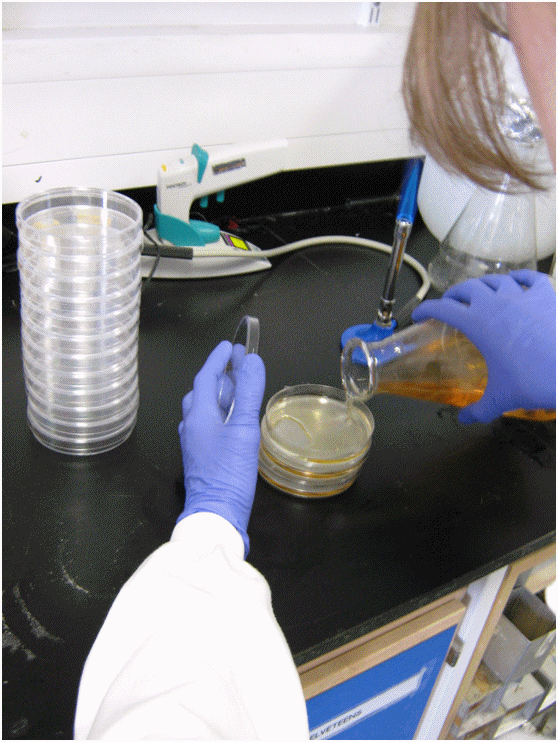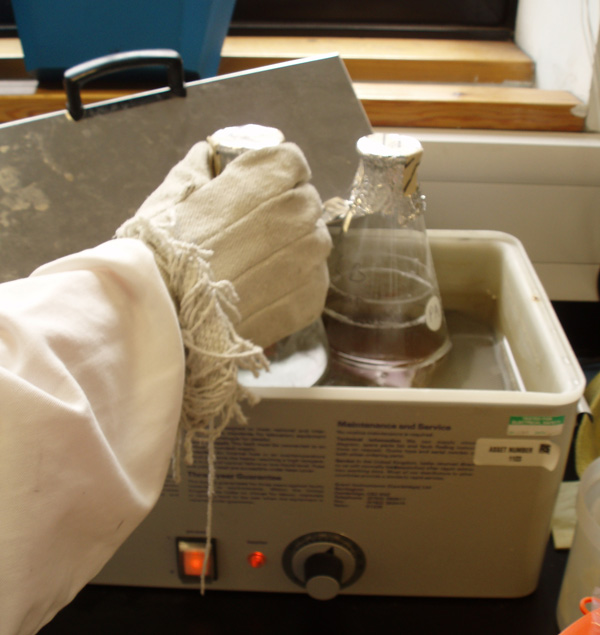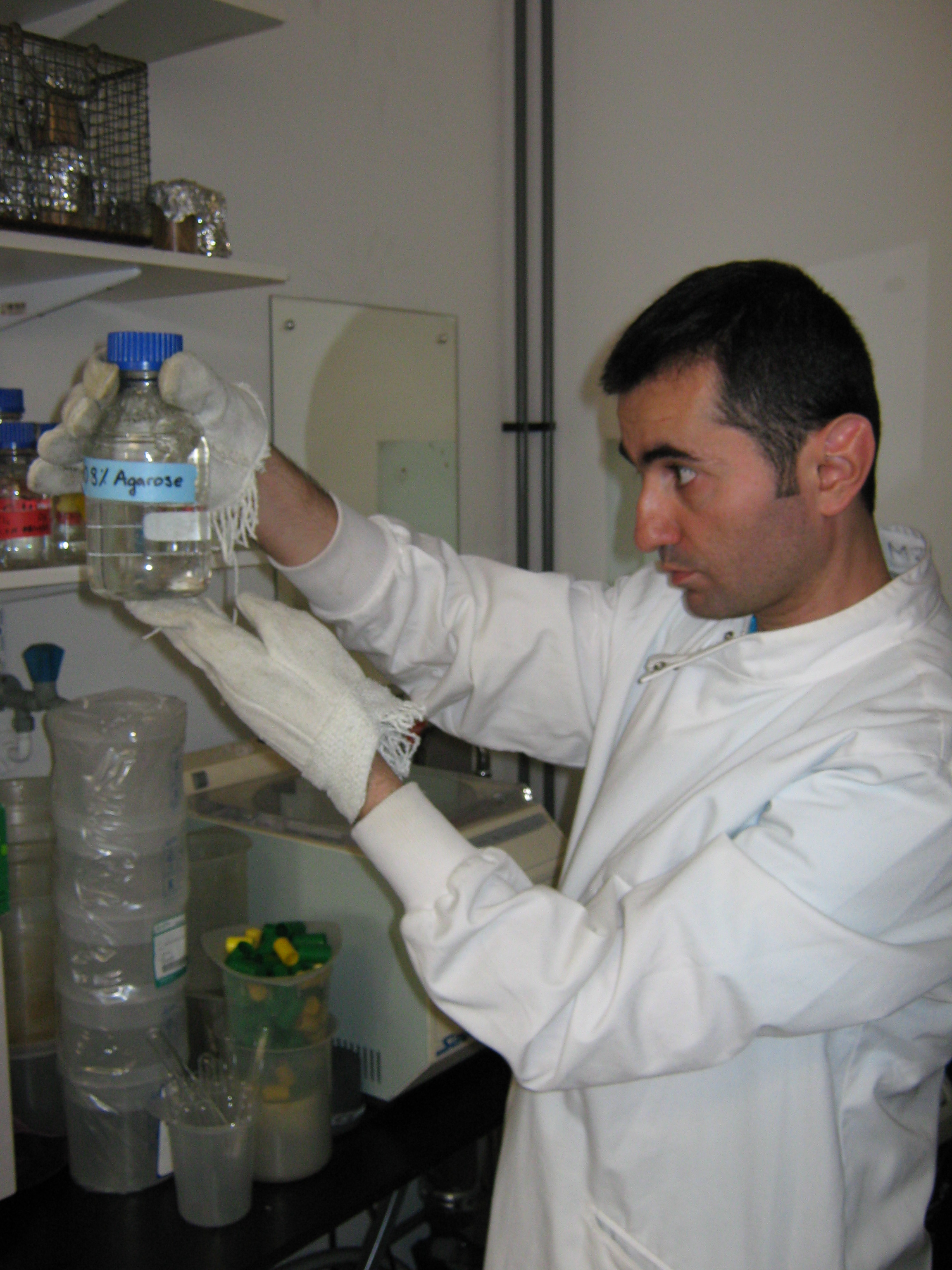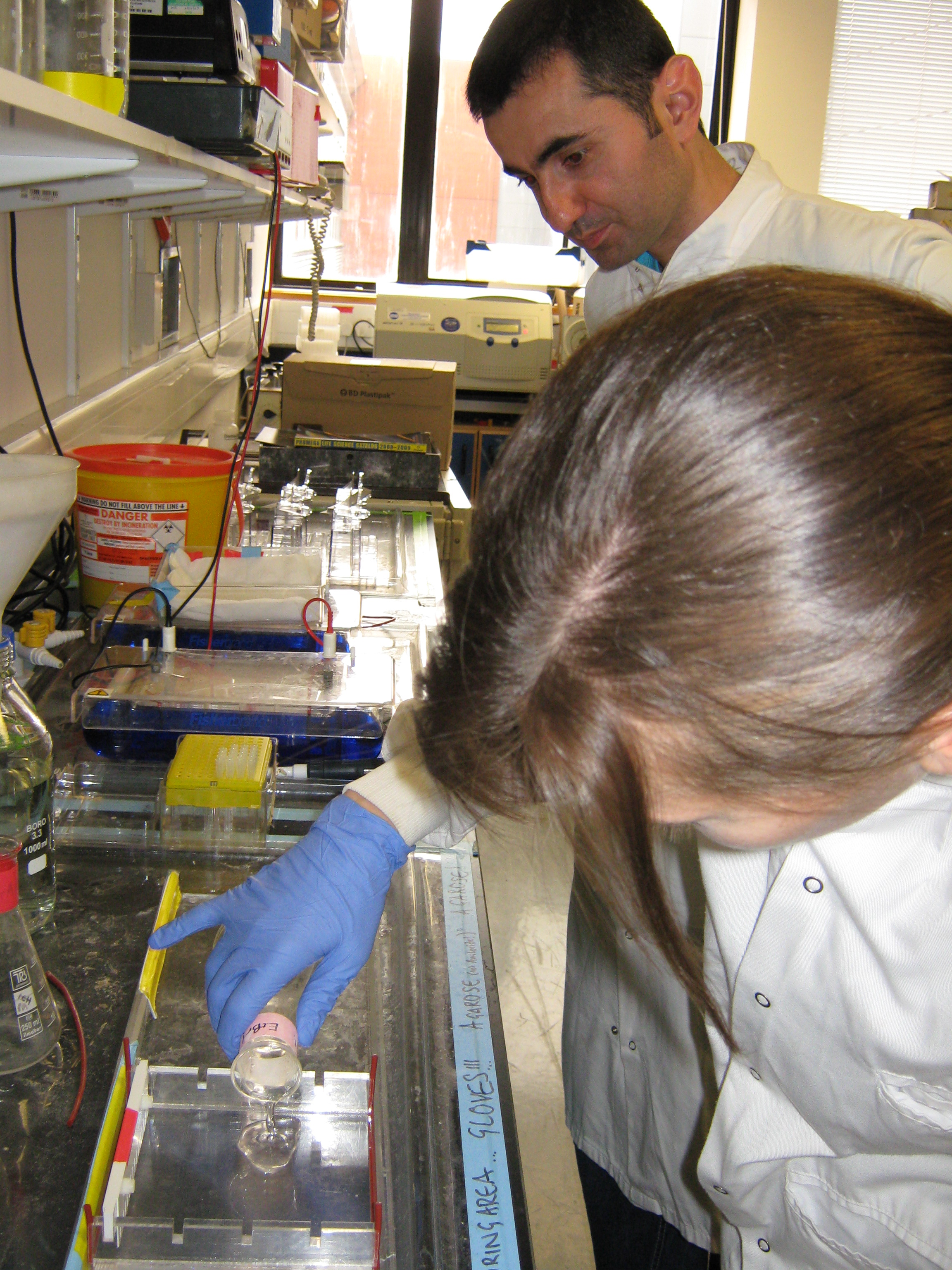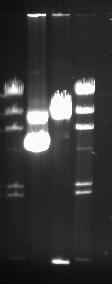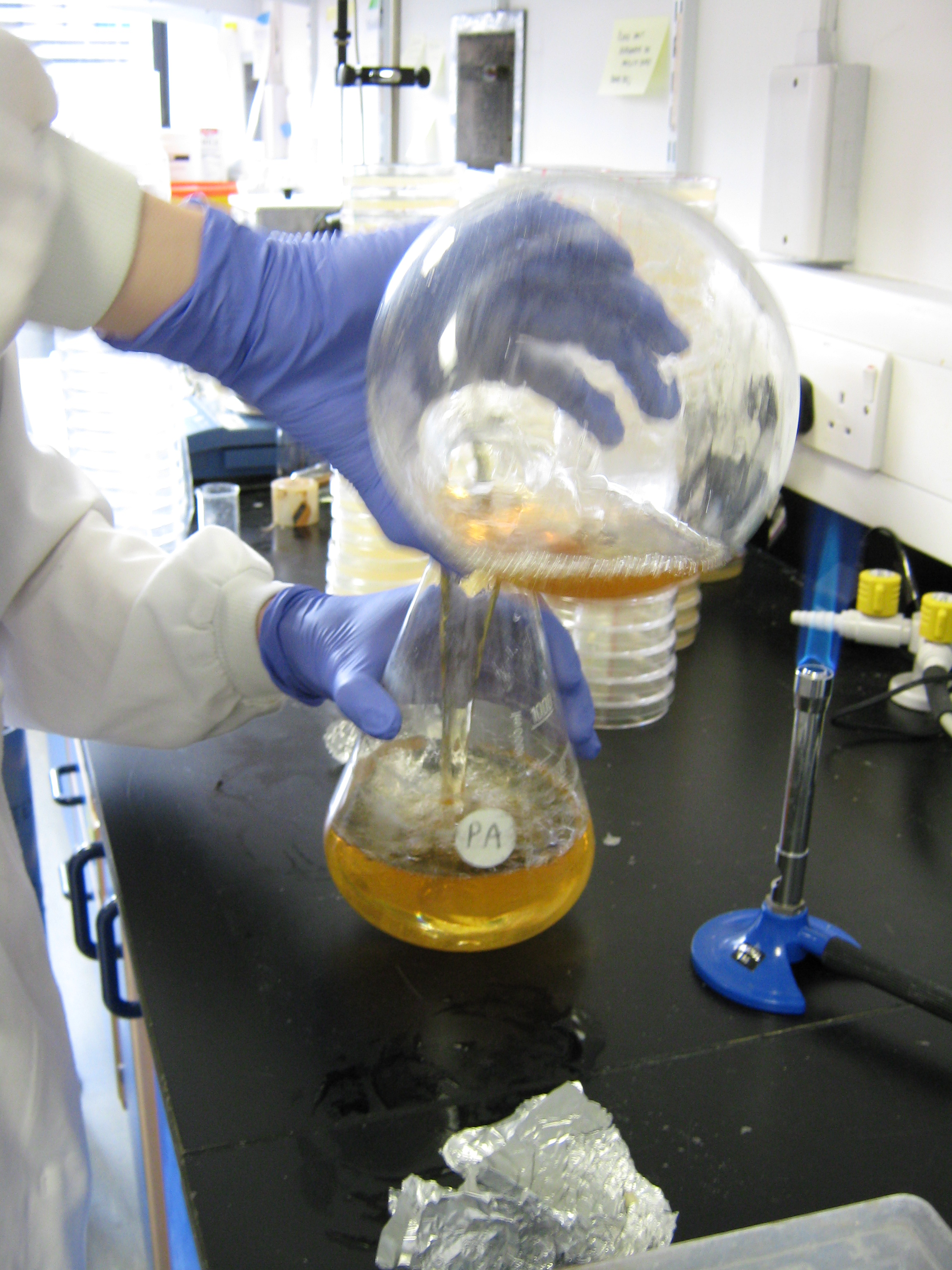Team:Newcastle/Labwork/11 August 2009
From 2009.igem.org
(→Overview) |
Babyneurone (Talk | contribs) (→What will the plates tell us?) |
||
| Line 104: | Line 104: | ||
===What will the plates tell us?=== | ===What will the plates tell us?=== | ||
| - | + | ||
* Plate 1 is an '''LB-only agar plate''' which contains overnight solution from tube 4 - this only contains MM competence medium as well as starvation medium added at a later stage. '''It contains NO ''Bacillus subtilis'' cells''' although it has been treated in the same way as the tube which does contain ''Bacillus'' throughout the transformation process. As it contains NO ''B. subtilis'', there shouldn't be any growth on this plate at all. Any growth that does emerge on this LB plate will be contaminant. '''Hence this plate tests the contamination control''' | * Plate 1 is an '''LB-only agar plate''' which contains overnight solution from tube 4 - this only contains MM competence medium as well as starvation medium added at a later stage. '''It contains NO ''Bacillus subtilis'' cells''' although it has been treated in the same way as the tube which does contain ''Bacillus'' throughout the transformation process. As it contains NO ''B. subtilis'', there shouldn't be any growth on this plate at all. Any growth that does emerge on this LB plate will be contaminant. '''Hence this plate tests the contamination control''' | ||
<br> | <br> | ||
Latest revision as of 12:06, 20 August 2010
Formal Lab Session - 11th August 2009
Overview
- Sporulation Tuning/Chassis Team - carried out a second attempt at pouring LB + Em + Kan plates and this time, it was a success
- Metal Sensor Team - transformed Bacillus subtilis cells with pGFP-rrnB plasmid and plated potential transformants onto LB + Chloramphenicol plates
Sporulation Tuning/Chassis team
Summary
Previously, we failed to pour the LB + Em + Kan plates successfully due to the smaller amount of volume. Today, from our lessons learnt, we attempted again, and it was a success.
This time however, we set up the water bath to a temperature of 55oC and placed the autoclaved LB + agar solution in it. The water bath ensured that the LB + agar solution would cool to only a minimum of 55oC and the same mistake of the mixture solidifying upon addition of the cold water would not happen.
Stochastic Switch Team
Summary
Today we run the gel for our pGFP-rrnB integration vector. We had restriction digest using EcoRI and HindIII. This gave us a 500bp of DNA on the gel.
Preparation of the gel
- 3.2 gr of agarose were solved in 400ml of 1xTAE buffer to make 0.8% agarose gel
- The solution was microwaved for 5 minutes and left to cool down for an hour.
Restriction digest
- We prepared a final solution of 10ul for the restriction digest
- We used
- 4.75ul H2O
- 1ul 10xBuffer(BufferE)
- 0.25ul BSA
- 0.5ul HindIII
- 0.5ul EcoRI
- 3ul DNA (gfp-rrnb)
- The solutions were incubate for an hour at 37C.
Running the gel
- we cleaned the comb and the tray
- We used 100ml of the agarose gel
- We poured the solution into a flask tube and added 0.8ul of ethium bromide.
- Poured the final solution into the tray. It was left for 15 minutes
- Loaded the wells with DNA ladder, uncut DNa, cut DNA and the ladder again. Because of the yellow band on the tray, it was very difficult to load the samples./ We intended to leave some gap between uncut and cut DNAs but we loaded them next to each other. The wells were also closed a bit. This situation may have been because the gel was not left long enought to set.
- Run the gel for 0.5 hour. But for a better resolution we decided to run it for another 0.5 hour.
Results
We saw the small 500bp DNA in the cut DNA's lane. Our DNA was highly concentrated and as shown below, the images are highly saturated.
The order of the lanes from left to right: DNA ladder, Uncut DNA, Cut DNA, DNA ladder
Metal Sensor Team
Introduction and summary
The Metal Sensor team have been given the task of test-transforming Bacillus subtilis 168 with vector plasmid pGFP-rrnB. This involves the Bacillus transformation protocol. So far we have made up all of the solutions involved in both the MM competence medium and starvation medium and have grown overnight cultures of Bacillus subtilis in MM competence medium. We have also incubated a falcon tube containing MM competence media without B. subtilis to act as a contamination control. Today, the rest of the Bacillus transformation protocol will be completed. In addition to this, LB plates containing chloramphenicol will need to be produced.
Changes to the Bacillus transformation protocol (day of transformation)
- For step 5 of the protocol the incubation period was for 2 hours
- For step 6, we inserted 5μl of DNA into the Bacillus subtilis cells we intended to transform and then 5μl of water to the Bacillus subtilis cells we intended to use as a control (to show that B. subtilis can only become resistant to chloramphenicol once it has received pGFP-rrnB)
- Additionally for step 6, we incubated the cultures for 45 minutes instead of 1 hour - 45 minutes is actually sufficient time.
- Steps 7 and 8 were completely left out; the solutions were plated out without centrifugation. As it happens the centrifugation step, which aims to concentrate the transformed cells, was not needed in this case.
What we did
Today's work involved the Bacillus transformations and making chloramphenicol LB + agar plates.
Bacillus transformations
The transforming Bacillus subtilis 168 protocol was used to transform the bacteria with pGFP-rrnB. Here is a summary of events:
- Taking tubes 1 and 4 from the overnight incubation (tube 1 containing Bacillus subtilis in MM competence medium and tube 4 containing only MM competence medium), 0.6ml of each of the solutions was added to 2 tubes which both contained 10ml of fresh MM competence medium.
- After 3 hours of incubation 10ml of prewarmed starvation medium was added to both tubes and another 2 hours of incubation followed.
- 0.4ml was taken from the tube containing no B. subtilis and placed into 1 Eppendorf tube; 0.8ml was taken from the tube containing B. subtilis along with MM competence medium plus starvation medium and equally distributed into 2 Eppendorf tubes. 5µl of pGFP-rrnB DNA was added to 1 Eppendorf containing B. subtilis whilst to the other Eppendorf tube containing B. subtilis 5µl of water was added.
- After 45 mins of incubation, the tubes were plated onto three chloramphenicol plates and one LB only plate in the following manner:
- 50µl of MM and starvation solutions with NO Bacillus subtilis (originating from tube 4) was added to the LB only plate
- 50µl of Bacillus subtilis with MM and starvation solutions PLUS water was added to an LB + chloramphenicol plate.
- 50µl of Bacillus subtilis with MM and starvation solutions PLUS pGFP-rrnB DNA was added to an LB + chloramphenicol plate.
- 200µl of Bacillus subtilis with MM and starvation solutions PLUS pGFP-rrnB DNA was added to an LB + chloramphenicol plate.
The way in which the chloramphenicol plates were poured is shown below. As for the LB only plate, it was already prepared from a previous experiment.
Pouring of chloramphenicol LB plates
The pouring plates protocol was used to make the chloramphenicol LB + agar plates. 1 litre of LB + agar solution was made up in the usual way before 5ml of chloramphenicol was added to the flasks. Here is a summary of events:
- 500ml of LB+agar solution was added to one flask; to another flask 500ml of distilled water was added.
- After autoclaving both flasks and cooling to correct temperature, the two solutions were combined.
- 5ml of chloramphenicol was added to the 1 litre of LB+agar solution.
- The LB + agar + chloramphenicol solution was distributed into plates.
- The plates were appropriately labelled and left on side to cool for over one hour - the 3 plates involved in growing today's transformants were then transferred to the 42ºC incubator so they could be dried off properly.
What will the plates tell us?
- Plate 1 is an LB-only agar plate which contains overnight solution from tube 4 - this only contains MM competence medium as well as starvation medium added at a later stage. It contains NO Bacillus subtilis cells although it has been treated in the same way as the tube which does contain Bacillus throughout the transformation process. As it contains NO B. subtilis, there shouldn't be any growth on this plate at all. Any growth that does emerge on this LB plate will be contaminant. Hence this plate tests the contamination control
- Plate 2 is an LB + chloramphenicol plate which contains overnight solution from tube 1 - this contains B. subtilis plus MM competence medium as well as starvation medium added at a later stage. However the Bacillus subtilis on this plate contains NO pGFP-rrnB DNA; instead it contains water (also added at a later stage). As it contains NO pGFP-rrnB DNA, there shouldn't be any growth on this plate because untransformed B subtilis doesn't have resistance to chloramphenicol. If there is growth then the Bacillus cells might have inherited the resistance randomly. Hence this plate confirms that only transformed Bacillus subtilis can become resistant to chloramphenicol.
- Plates 3 and 4 are LB + chloramphenicol plates which contains overnight solution from tube 1 plus the other solutions added during the transformation process (including more MM competence medium and starvation medium). Not only does it contain Bacillus subtilis cells but it ALSO contains the pGFP-rrnB DNA. If the Bacillus cells have become transformed by pGFP-rrnB then they should grow on chloramphenicol plates as they should have acquired appropriate resistance. On plate 3 50 microlitres of the competent culture was added where as on plate 4, 200 microlitres of the competent cultures were added. These varying concentrations just mean that there should be different amounts of colonies on both plates. Hence these plates confirm whether the Bacillus subtilis cells have been transformed by pGFP-rrnB on the basis of chloramphenicol resistance.
|
| |||||||||||||||||||||||||||||||||||||||||||||||||||||||||||||||||||||||||||||||||||||||||||||||||
|
| |||||||||||||||||||||||||||||||||||||||||||||||||||||||||||||||||||||||||||||||||||||||||||||
News
Events
- 20 – 21 June 2009 - Europe workshop (London)
- 23 – 24 June 2009 - UK iGEM meetup (Edinburgh)
- 23 October Practice Presentation (Newcastle)
- 23 October T-shirts are ready
- 27 October Practice Presentation (Sunderland)
- 27 October Poster is ready
- 30 October – 2 November 2009 - Jamboree (Boston)
Social Net
- Newcastle iGEM Twitter
- [http://www.facebook.com/home.php#/group.php?gid=131709337641 Newcastle on Facebook]
- [http://www.youtube.com/user/newcastle2009igem Newcastle Youtube Channel]
 "
"

